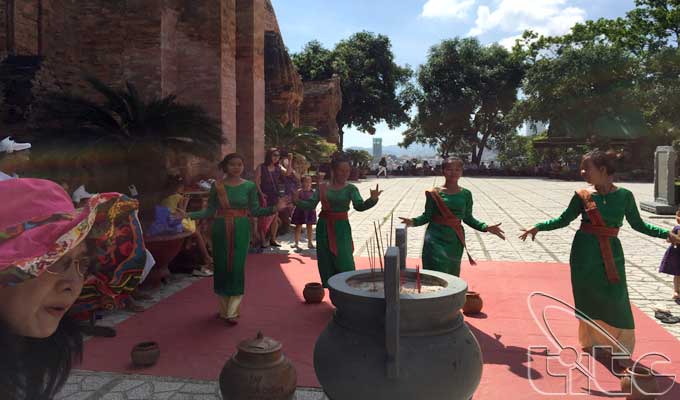The Khmer have developed many dances for different occasions which reflect their creativity, aesthetic sense, and cultural and social values.

The many forms of the Khmer dance serve religious activities and provide entertainment after work. The Khmer have upheld three main forms of dance: folk dance, religious dance, and theatrical dance.
At festivals and new year celebrations, men and women of all ages cheerfully dance on the background music of the 5-tone ensemble. The most popular folk dance is the Ram Vong.
Men and women couples move in rhythm to form a circle. Women elegantly sway their arms in front of their chests while men outstretch their arms as if they are protecting their partners.
Folk dances such as Ram Vong, Lam Leo, and Saravan are indispensable part of Khmer festivals.
Professor, Doctor Le Ngoc Canh, Vice President of the Vietnam Dancers’ Association, said, “Folk dance of the Khmer is hilarious and fun. Whenever the music starts, old and young people dance naturally.”
The Khmer have created folk dances imitating their work such as scooping shrimp, coconut dance, harvesting rice, beating Sadam drump, and a wedding ritual of breaking the fence to enter the bride’s house.
Religious dance is used in worship rituals such as worship of the guardians of the rice fields and villages, and ceremonies held at pagodas and festivals. Religious dance has not been widely upheld and even felt into oblivion in some Khmer villages.
Professor, Doctor Le Ngoc Canh, talked about the theatrical dance of the Khmer. “Theatrical dance has three types: Ro bam, Du ke, and Di ke. The Ro bam dance is similar to Tuong drama; the Du ke dance is similar to Cai luong, reformed opera; and Du ke is similar to Cheo, popular theater, of the Kinh," he noted.
"Ro bam dance is a typical Khmer stage performance with symbolic hands and legs dance movements. Ro bam dances are based on legends,” he added.
For the Khmer, dance plays an important part in their cultural and religious lives. It reflects the Khmer architecture, painting, and culture.
Mr. Canh said, “Dances are often performed at pagodas. It’s impossible to say whether the pagodas appeared before or after dances. In the Khmer pagodas, there are many statues and images of people dancing, birds, and genies on pillars, beams, and walls. Talking about the Khmer pagodas is talking about dancing images.”